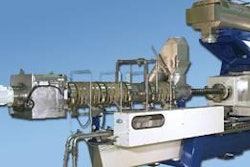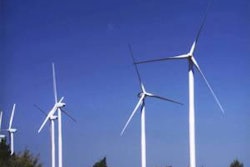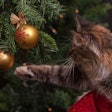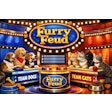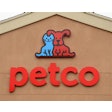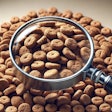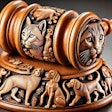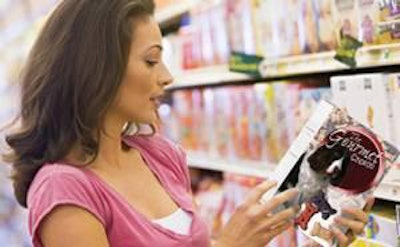
In a record time of just over one year since the proposal, the new EU regulation on the Marketing and Use of Feed (767/2009/EU) was adopted and published in the Official Journal of the EU in the beginning of September 2009. Circulation of feed materials and compound feed is regulated by four main directives and some 50 amending or implementing acts, making this turnaround surprisingly a fast one. Some of the relevant legislative requirements date back more than 25 years. For simplification and consolidation, these four directives governing animal feed were combined in the new regulation:
96/25/EC - Circulation of feed materials;
82/471/EEC - Bio-proteins;
93/74/EEC - Dietetic feed; and
79/373/EEC - Circulation of compound feeding stuffs.
Evolution of feed legislation focusing on safety has been intense, just as it has been in the US after the 2007 recalls. Less attention on the conditions for the circulation of feed, e.g. concerning marketing conditions, labeling or advertising, has been made over the past year.
The developments both in the feed business and in the legislative environment around the feed sector revealed the need to modernize and simplify the current law. So, legislative bodies needed to meet the following goals:
- Achieve legal clarity and a harmonized implementation;
- Facilitate smooth functioning of the internal market;
- Simplify technical requirements and remove unnecessary administrative burden;
- Increase competitiveness of the EU feed and farming sector; and
- Enable users of feed to make an informed choice without being misled.
What are the main new elements to be observed for the labeling and marketing of petfood?
- New rules on how to label additives;
- Some new terminology;
- Category labeling and consumer information on request;
- Clarification of current practice that all claims must be scientifically substantiated;
- Explanation and recognition of multipacks;
- Extension to all kinds of communication (e.g. Internet), not only the label;
- Industry to develop a Code of Good Labeling Practice;
- A new catalogue of existing feed materials and a register of new feed materials;
- Involvement of the European Food Safety Authority (EFSA) for claims and dietetic feed; and
- Safety and traceability rules and information of authorities in case of a hazard.
The biggest effect this new regulation has on petfood labeling is improving the appropriateness of the petfood labels to prevent the purchaser of petfood from being confused or misled.
The new regulation states that the labeling and the presentation of feed shall not mislead the user and that the labeling particulars given are in at least the language or one of the official languages of the Member State or Region in which it is placed on the market. Other changes include:
The labeling and the presentation of feed may draw particular attention, provided that the following conditions are met:
(a) The claim is objective, verifiable by the competent authorities and understandable by the user of the feed; and
(b) A scientific substantiation of the truthfulness of the claim (publicly available scientific evidence or documented company research), shall be available with the responsible operator at the time the feed is placed on the market.
All additives having a legal maximum level in EU legislation, all zootechnical additives and urea (and derivates) must be labeled preceded by the term "Additives", followed by their category or functional group, identification (E-number) and/or their specific name and their added amount. However, it is allowed to colorants, antioxidants and preservatives that have a maximum level just by their functional group.
The labeling of additives is one of the major changes subject to some uncertainties: functional groups are legally defined, such as "vitamins, pro-vitamin and chemically well defined substances having a similar effect" - would it be legally acceptable to just "vitamins"?
Terminology being used on labels and packaging is also going to change. Some terms will be required to be used on the label, such as "Composition" for the list of ingredients, "Additives" for the list of additives and "Analytical constituents" for the typical analyses. Alternative terms are permitted for the analytical constituents: "protein" instead of "crude protein", "fat content" instead of "crude fats and oils" and "crude ash" may be replaced by "incinerated residues" or "inorganic material".
Multipacks which have long been popular and successful in Europe, especially for wet cat foods, have finally gotten regulated as well. The industry practice of grouping several single servings or daily rations in one combined pack was never legally recognized. The new regulation clarifies that this practice is permitted and that the single-serve packs have reduced labeling requirements provided the total sales unit does not exceed 10kg.
Self-or co-regulation is recognized by the new regulation as well. FEDIAF has drawn up a "Code for Good Communication on Pet Food" that is available online. The document explains and exemplifies the regulation and how it works in practice, will give interpretation and, after recognition by the EU and member states, will be a practical tool for companies and authorities.
The Community catalogue of feed materials will list all ingredients used in farm feed and petfood. Any company using an ingredient not included in the catalogue will have to give notice of the ingredient so that it can be put on a public register.
Although some issues still need clarification, the FEDIAF code for good communication will be instrumental in finding a common understanding and application of the new rules.

